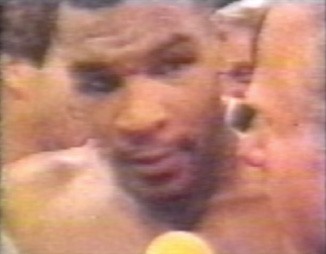Over the past five decades, Los Angeles–based artist and professor Ulysses Jenkins has produced daring, unconventional video art and performances that push the boundaries of his medium to examine and expand representations of Blackness. Jenkins’s early experiences in two starkly different environments helped shaped his singular perspective. Born in 1946, Jenkins grew up in a fairly integrated community on the west side of Los Angeles. In the late 1960s, he studied art at Southern University in Baton Rouge, Louisiana, where he experienced overt racism and became involved in the Civil Rights movement. His social and political concerns remained with him and inspired his art when he returned to Los Angeles to begin his career as painter and muralist. He created and collaborated on several murals in the city, including The Great Wall, the longest mural in the world, organized by Judy Baca, in 1976.
A few years earlier, Jenkins had participated in a videomaking workshop in Venice, California and became captivated with the medium. He explained, “You spend a day or a few days with the equipment, you get the video jones. You get addicted!” When he resumed formal training in the late 1970s, he earned an MFA at the Otis Art Institute, where he studied under luminaries, such as Betye Saar and Charles White, and he began exploring video and performance as means of reaching wider audiences.
Using the Sony Portapak, the first portable consumer video camera, Jenkins made some of his earliest works. These engaged themes and topics he has investigated for much of his five-decades-long career—the American media’s portrayal of Black communities and, in particular, Black men. His first foray into video was Remnants of the Watts Festival (1972), a compilation of footage taken during the planning and execution of the annual event, which began in response to the 1965 Watts uprising. Jenkins interviewed the organizers and festivalgoers, educating his viewers about the history of the Watts neighborhood and showing them the joy and creativity on display each year.
Arguably his most cited video, Mass of Images (1978), soon followed. One of his performance works, or “rituals,” as Jenkins terms them, indeed has a solemn tone, while also verging into absurdist territory. The artist cast himself as narrator amid a stack of television sets, wearing a bulbous plastic mask and wielding a sledgehammer. He stares directly into the camera as he intones, “You’re just a mass of images you’ve gotten to know from years and years of TV shows,” and intercuts his entrancing act with stills of Birth of a Nation, The Jazz Singer, Stepin Fetchit, Little Rascals, and other demeaning portrayals. Jenkins attempts to smash the sets but ultimately relents, thus conveying the futility of their destruction, as the objects are not the source of the problem, they only receive the images. It is the historical notions of Black inferiority and white supremacy entrenched in American culture that need eradication.
Rather than destroy televisions, cameras, and other means of media production, Jenkins utilizes them in his practice. He deploys these tools to exploit the communicative potential of TV, examine its power to influence events and shape histories, and critique the content it disseminates. Jenkins exemplifies this strategy in his video Secrecy: Help Me to Understand (1994). The titular term “Secrecy” refers to an African concept of an art that conceals and reveals. Jenkins explains, “That which is in front of someone (circumstances or an art/ritual object) can remain indiscernible if they cannot decode the metaphorical language being used. . . . The intent of the work is to examine how discrimination is ritualized in the media.”
In Secrecy, Jenkins compiles footage from TV news segments, late-night talk shows, concert videos, Hollywood films, and other examples that explore media portrayals of Black men as menacing, tragic figures throughout recent history. He splices and layers clips of King Kong and Julius Caesar with segments featuring Mike Tyson, Michael Jackson, Elijah Muhammad, and O. J. Simpson. As these images fade and dissolve into each other, the video is punctuated by a film clip of Sidney Poitier on the phone imploring his listener, “Help me to understand. What went wrong?” and floating phrases, such as “YOU DECIDE,” “What to Watch?,” and “Television . . . So many choices” overlay the imagery. At the end, we no longer see views of celebrities but instead the uprising of Black communities after the 1992 Rodney King trial, as well as Rodney King himself famously entreating viewers to “get along . . . [and] stop making it horrible.”
In his varying kaleidoscopic survey, Jenkins reclaims TV imagery for his own purposes and rejects mainstream interpretations of Black male figures. Secrecy visualizes the destabilization of those ideas using an array of video effects and transitions that break apart the supposed neutrality of television programs. The video opens up space for new, alternative interpretations and conveys the complexity of being Black in America and the impossibility of an easy reading or straightforward portrayal. As Jenkins states, “This is what it is like to be Black in society. Sometimes things are unpredictable, and it’s hard to see what’s going on.” –Kanitra Fletcher

